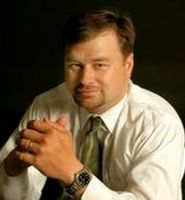Book Review: The Undercover Economist
The 'dismal science' goes undercover

The Undercover Economist: Exposing Why the Rich Are Rich, The Poor Are Poor - And Why You Can Never Buy A Decent Used Car!
By Tim Harford
With his latest book, The Undercover Economist, British journalist Tim Harford has followed in the in the footsteps of Steven D. Levitt's and Stephen J. Dubner's successful Freakanomics in making the dismal science both a trendy and interesting subject outside its normal audience. Some of you may be familiar with Harford's Dear Economist column in the Financial Times Magazine. Those who aren't will find this book a worthy introduction to his witty and erudite style.
The one drawback, at least for the North American market, is that all the examples used in the book are British, but this is easily overcome by the author's enthusiasm and the everyday context he uses. In fact, of all the books you read this year, The Undercover Economist probably has the most practical advice you can apply to your daily life. Harford deconstructs the upscale coffee shops that seem to fill every main intersection in Canada's downtown city cores. He even delves into the economics behind the Starbucks pricing scheme and in practical terms shows how you as a consumer can actually optimize the value you receive at this and other up-market coffee chains.
As Harford breathlessly shares with his readers, for all intents and purposes, every serving essentially costs the same for Starbucks to produce. The cost differentials between the various types of drinks and cup sizes amount to mere pennies. The prices vary because the consumer will pay these amounts, and in fact some Starbucks customers show remarkable price indifference. It is for these consumers that the elaborate coffees such as chai latte have been created. For those who are price sensitive, there remain fairly inexpensive items on the Starbucks menu.
Continuing on the coffee theme, Harford even examines the growing phenomenon of fair trade coffee - that is, coffee produced with a social conscience, under agreements that ensure the farmers are not exploited. He notes that, while its provenance may be exceptional, in terms of utility for the drinker, it is indistinguishable from non-fair trade coffee. And he talks about the example of what happened when a company actually tried to charge more for fair trade coffee when it was served alongside the non-fair trade type.
From a political perspective, you will not get much new out of this book. Thematically, it is much more like a return to Economics 101 - including the unquestioning endorsement of free trade and the removal of all tariff barriers between countries. So politically at least, it is a little daft. For sheer entertainment value however, it really can't be beat.
Those who find this book interesting may be provoked to read Harford's first book The Market for Aid, which he co-authored with World Bank VP and International Finance Corporation Chief Economist, Michael Klein.
Strongly recommended.


<< Home